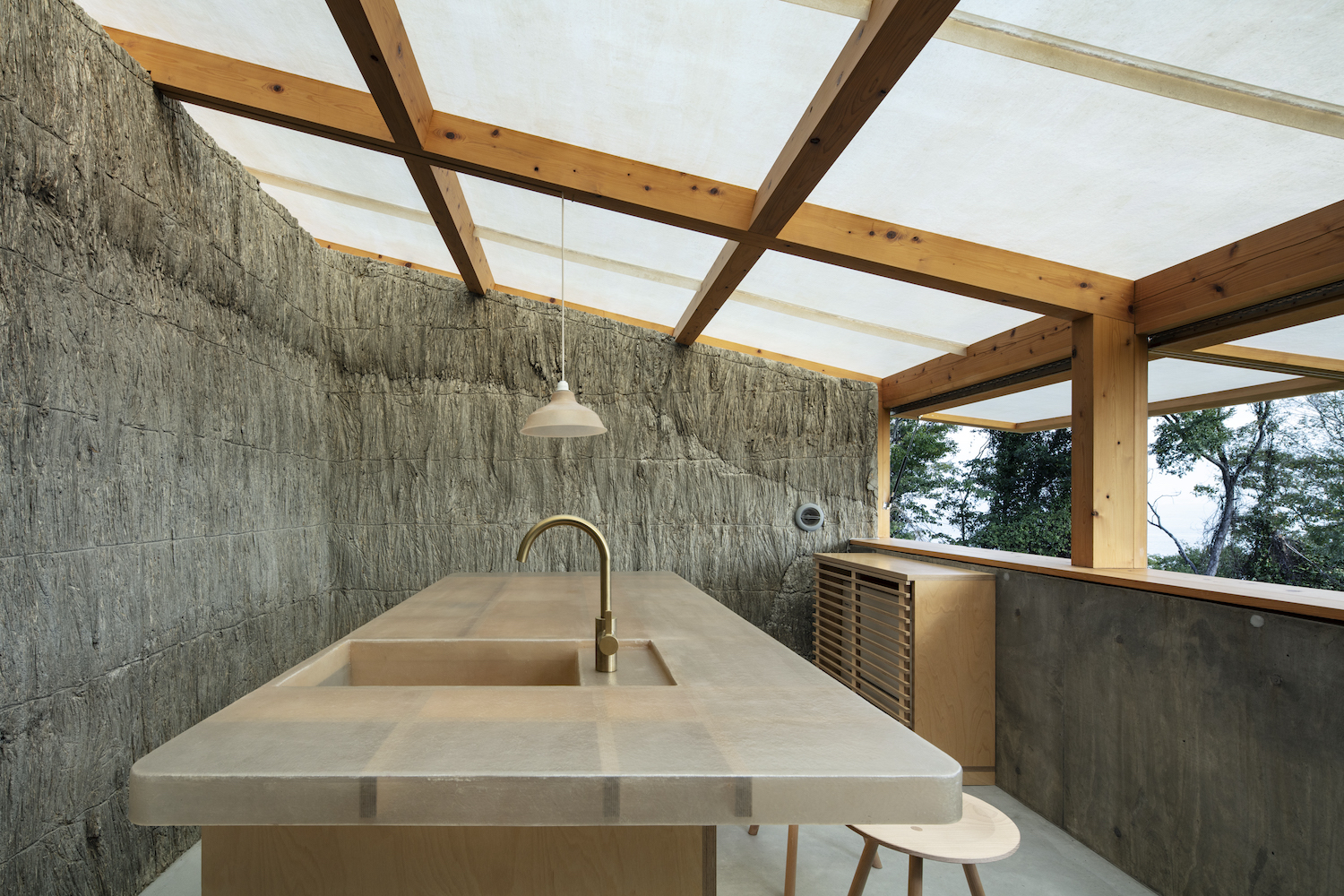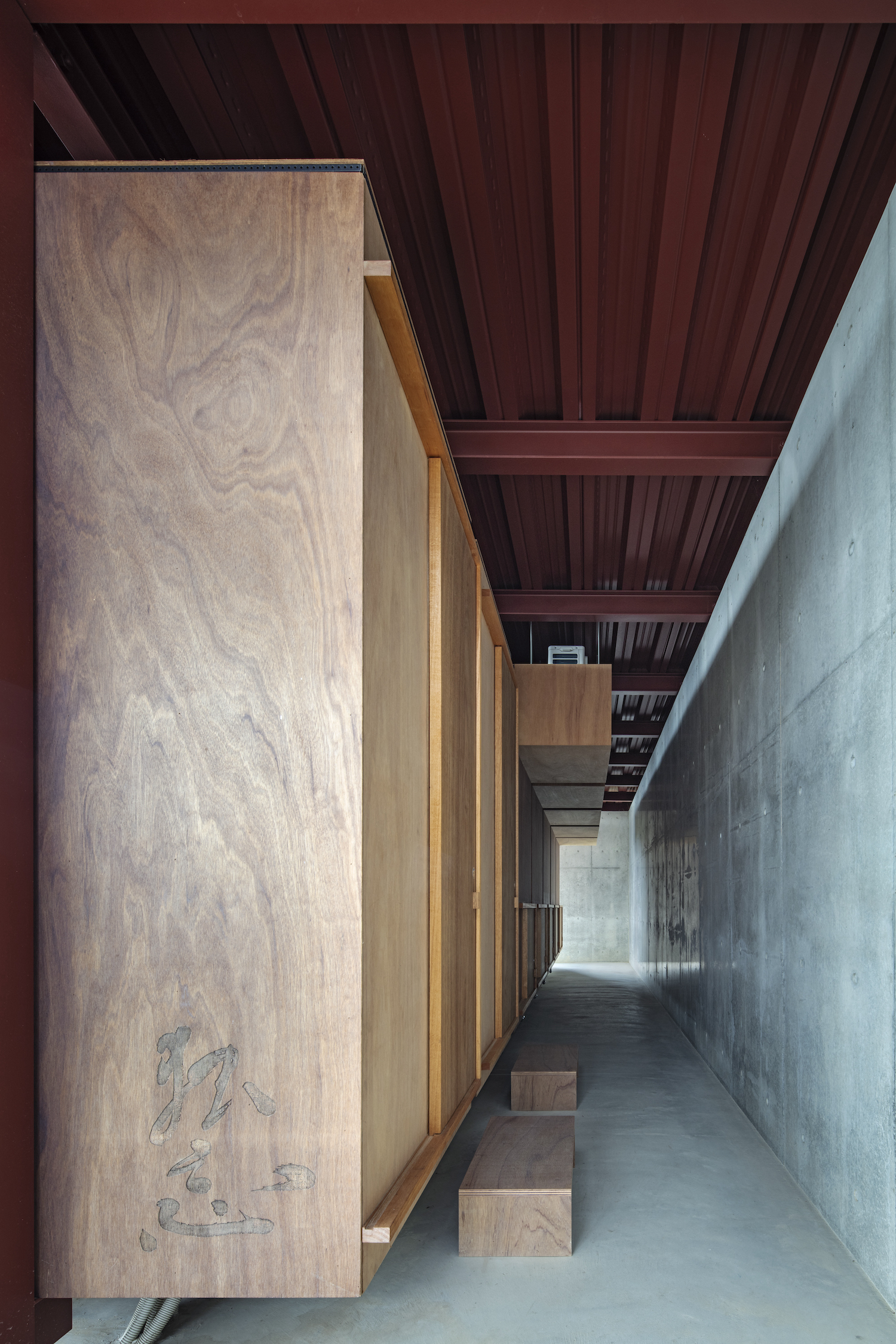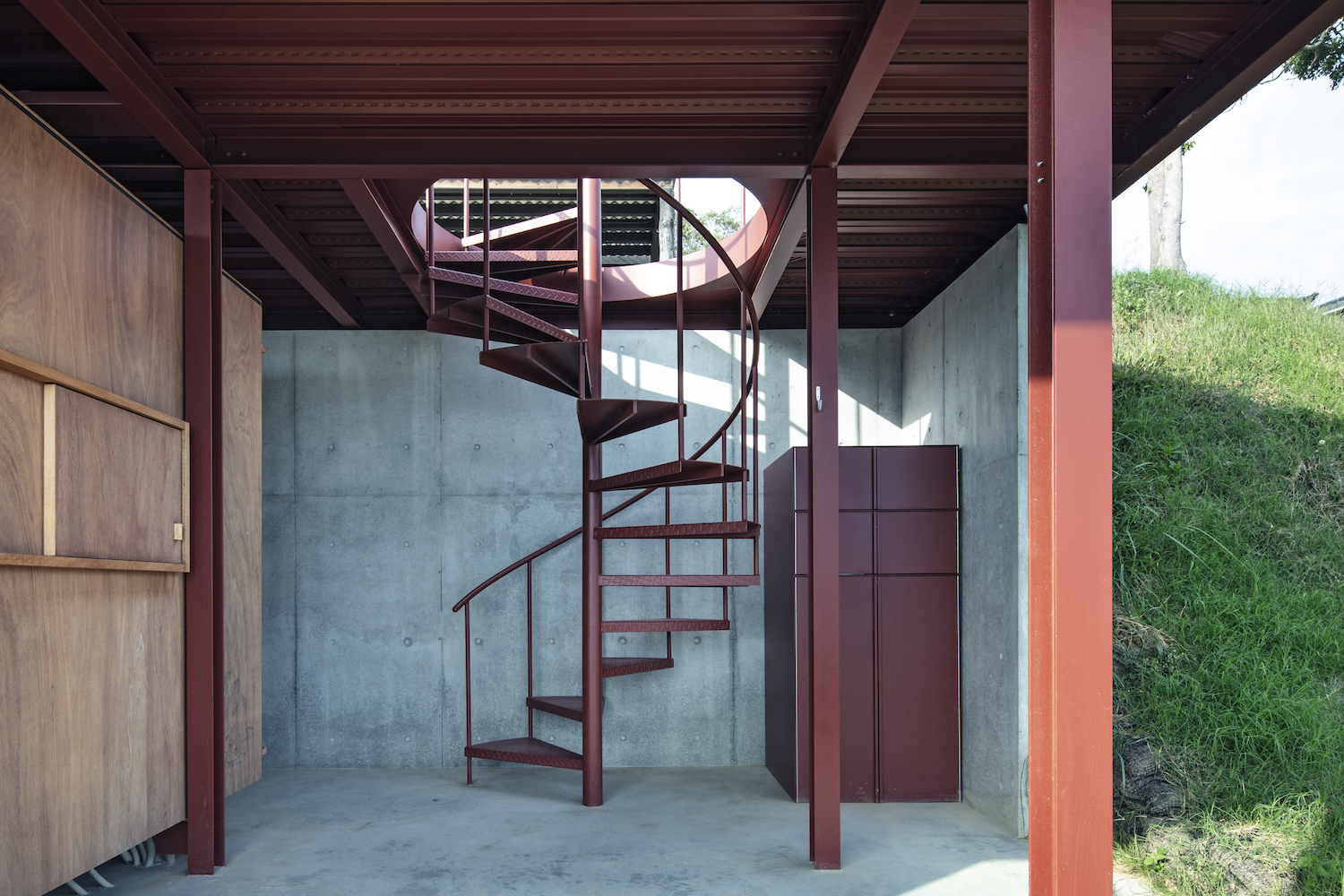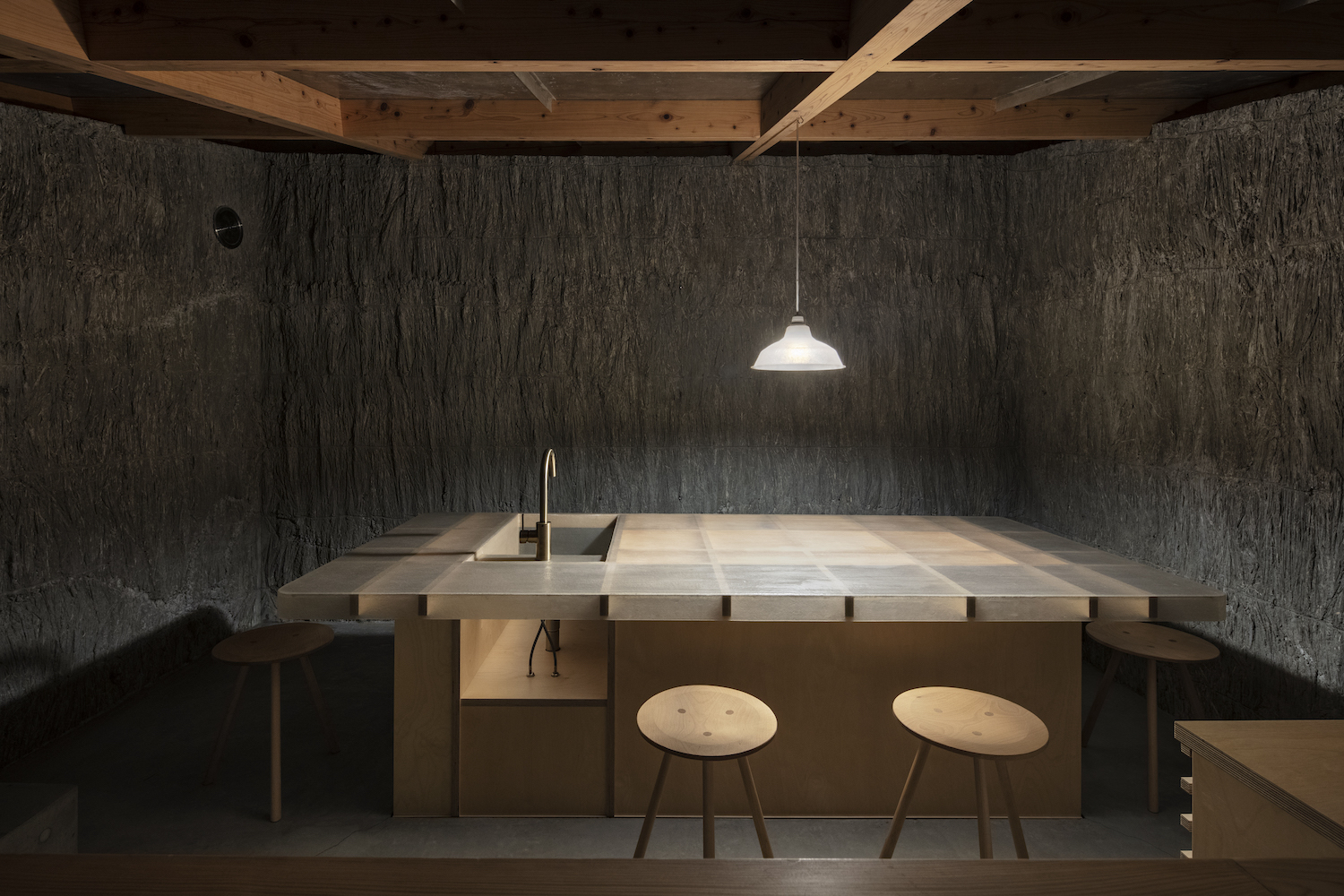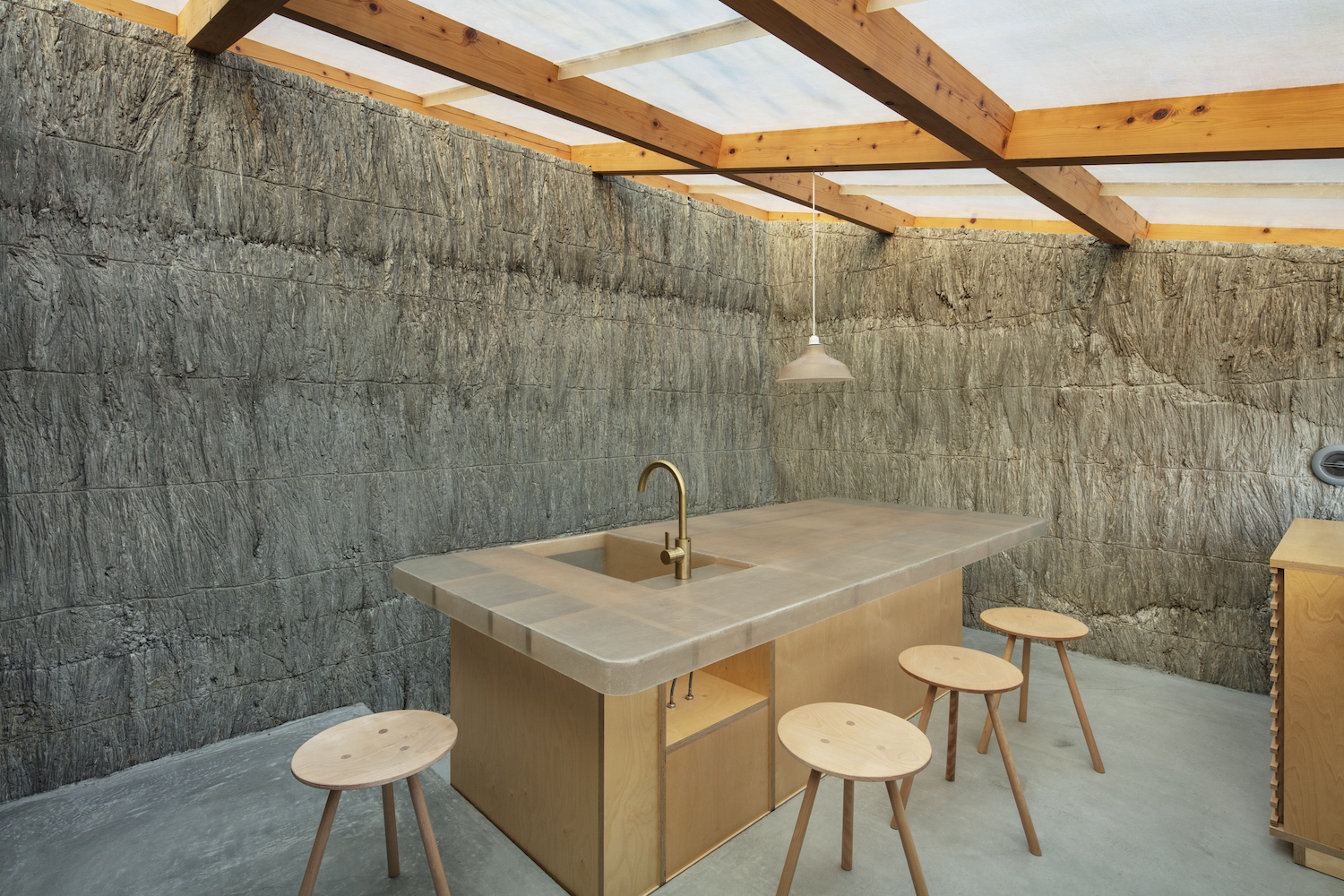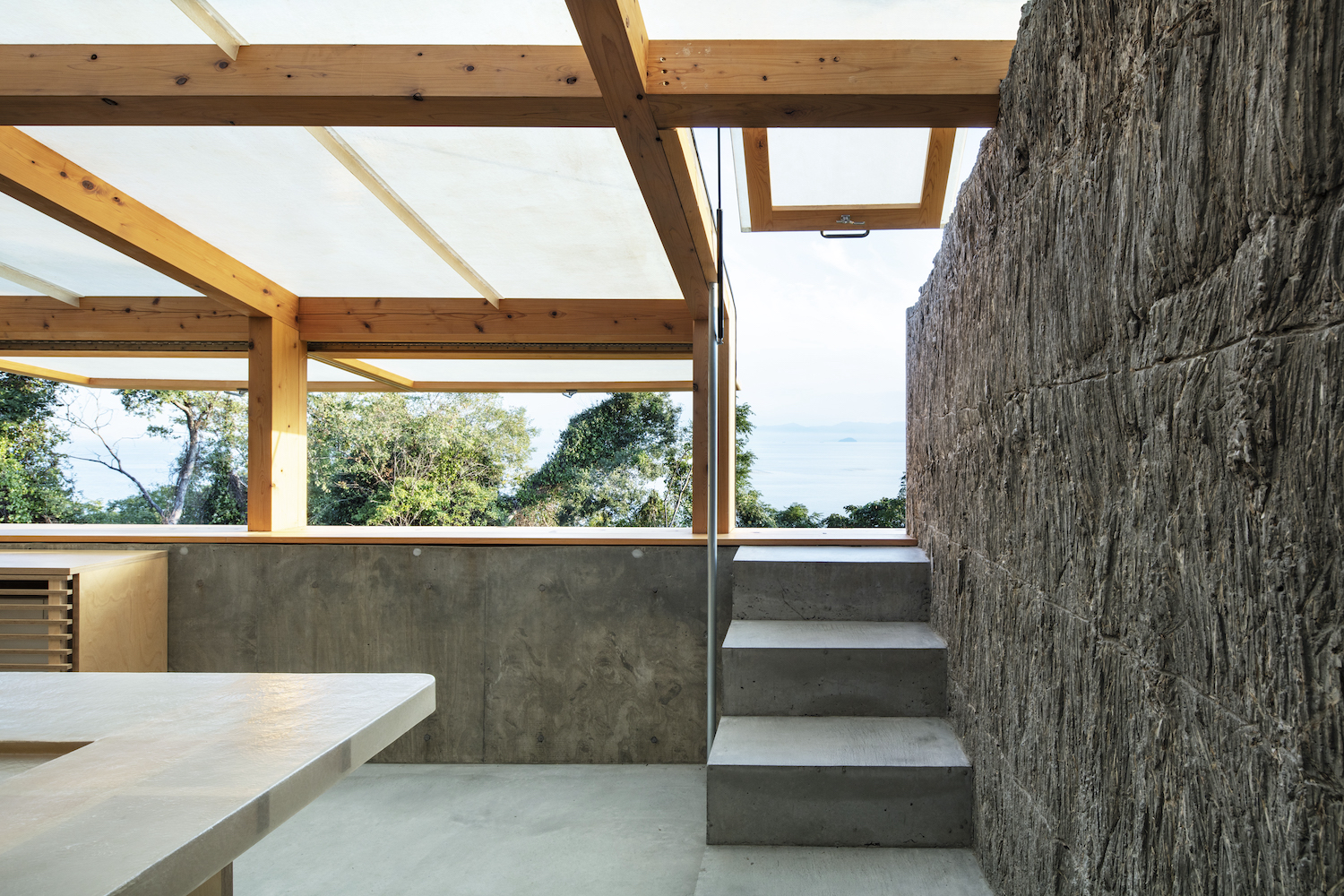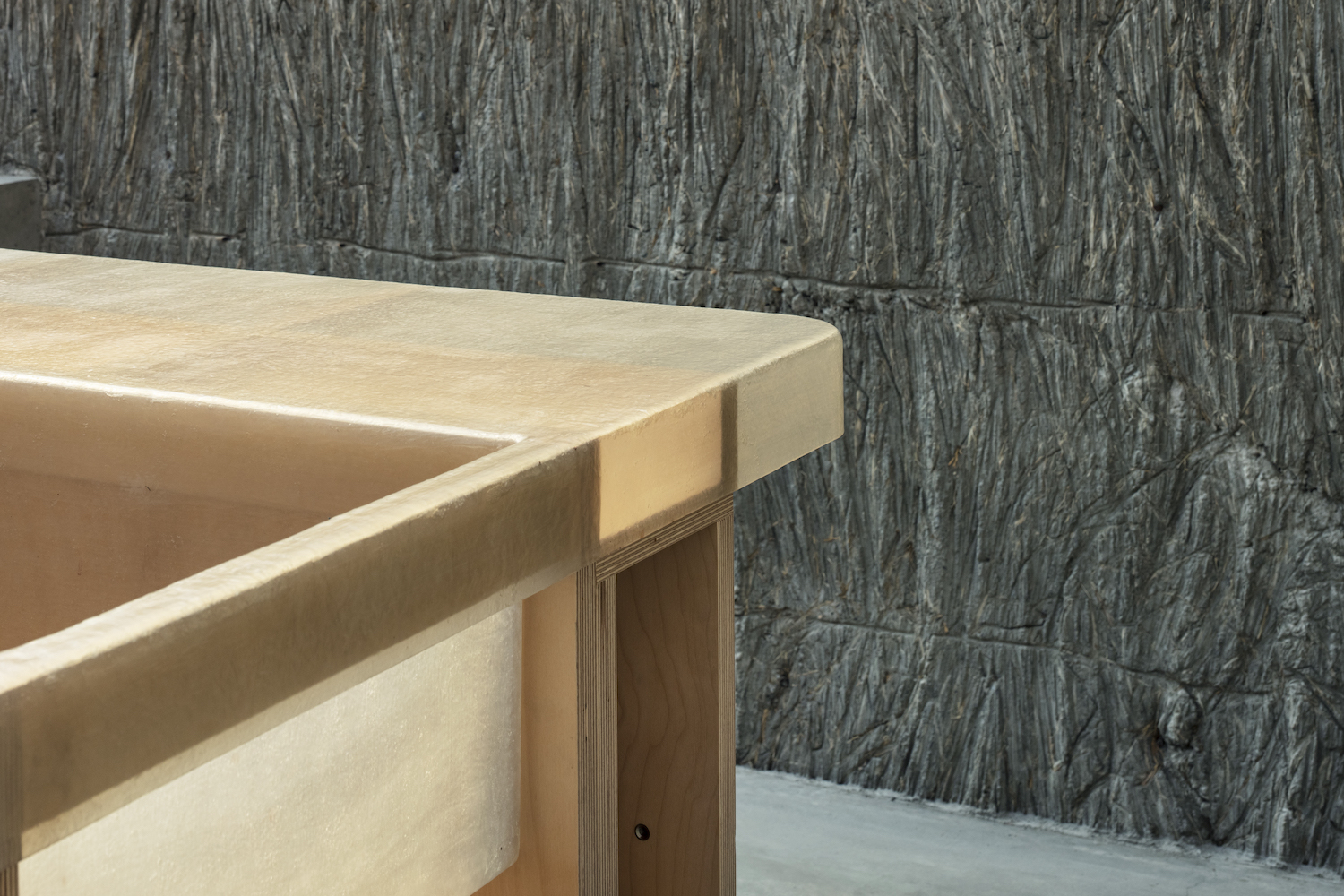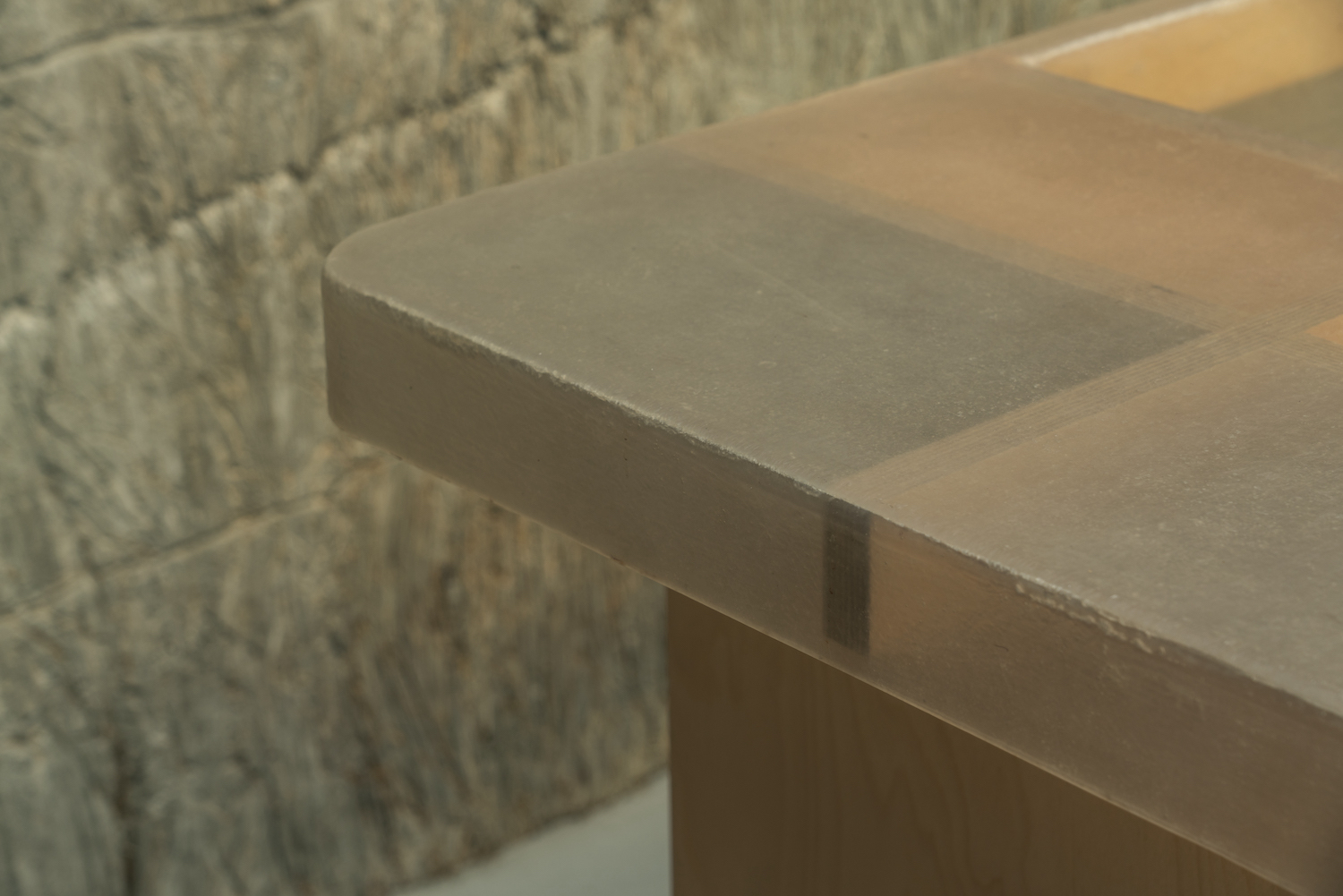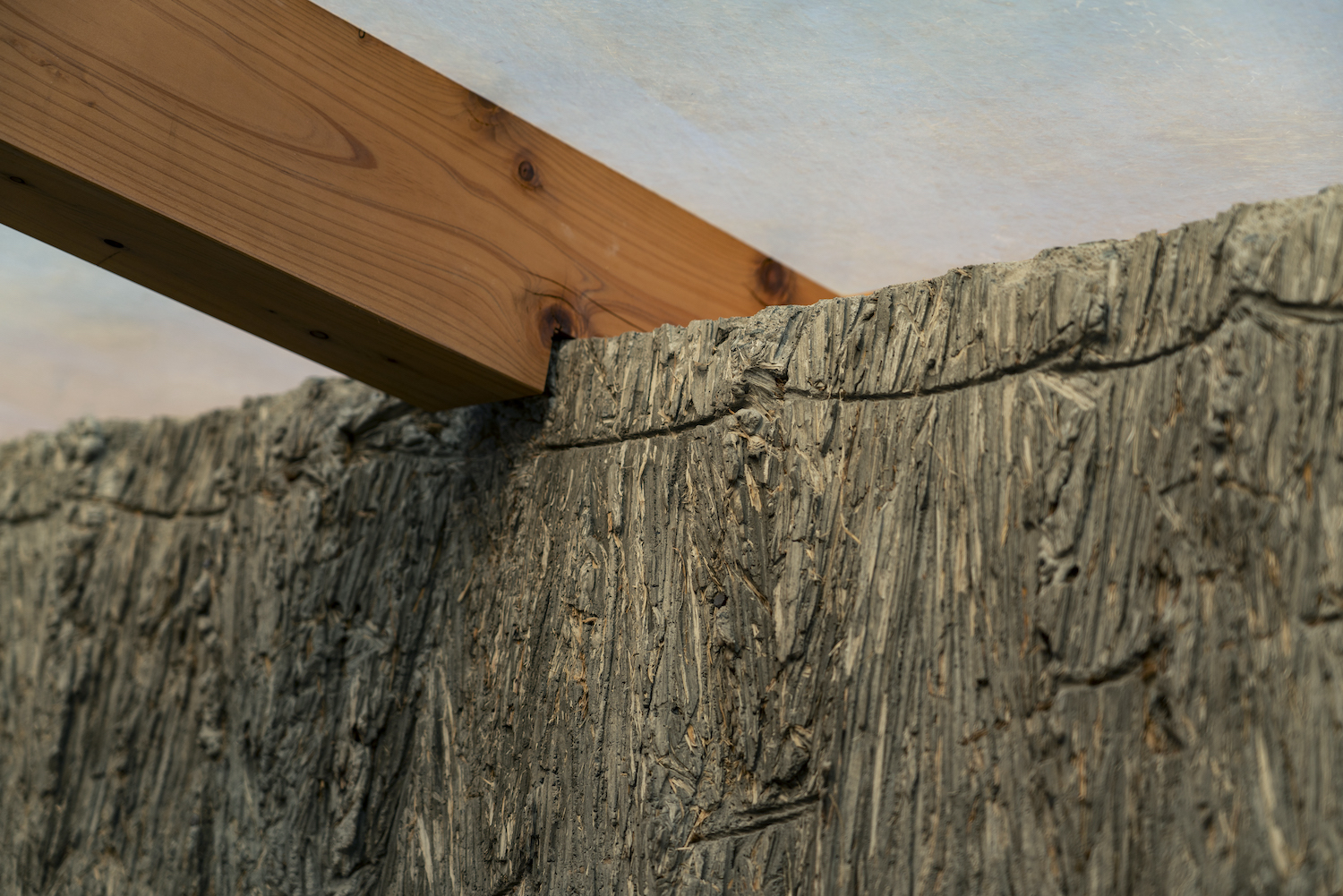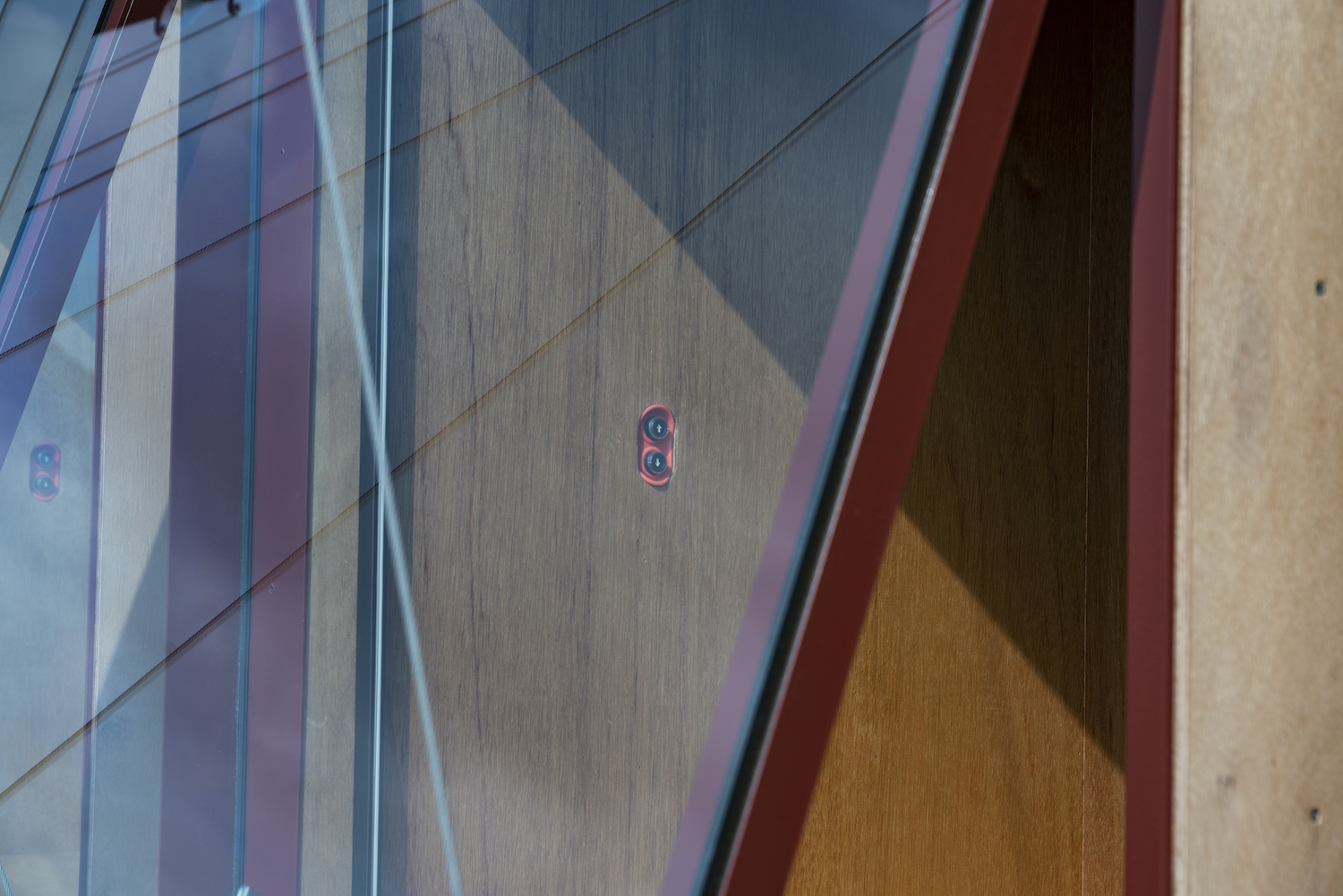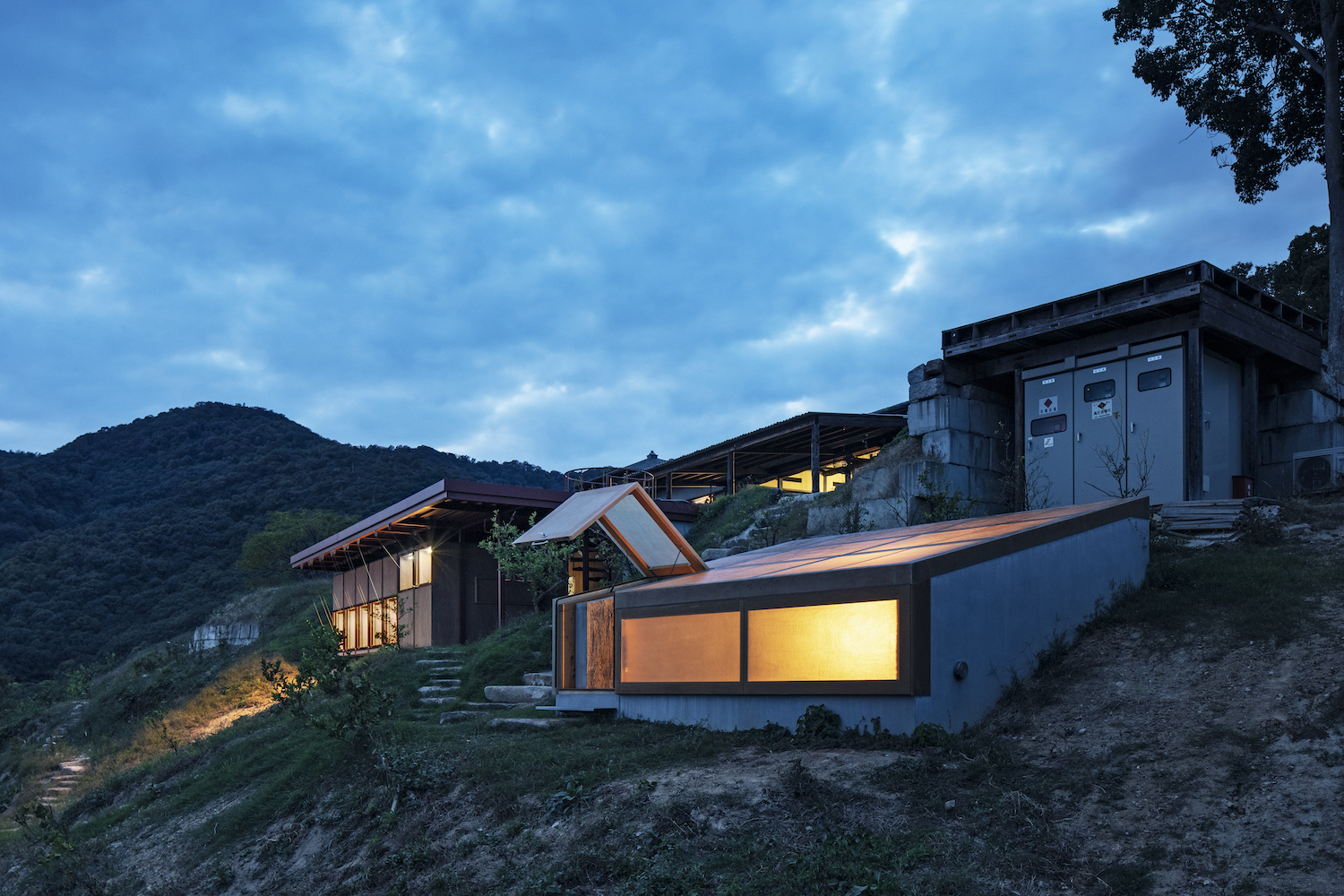Dokubo + El Amigo is a residence located in Seto Inland Sea, Japan, designed by Schemata Architects. The Seto Inland Sea is home to numerous islands, and on one of them stands a residence that boasts an impressive array of buildings. The main house, tearoom, guest quarters, and dining room are situated on a slope that overlooks the sea to the south. Visitors to the house, which include the owner’s family and friends, often come to enjoy the view and each other’s company. To cater to these visitors, the owner recently had a guesthouse for children and a pub called “EL AMIGO” constructed a short distance downhill from the main house. The slope where the new buildings were added rises counterclockwise and is dotted with other structures.
However, the new buildings were thoughtfully placed so as not to impede the breathtaking view of the Setouchi landscape that the existing buildings already provide. The guesthouse, which was inspired by the design of shukubo accommodations found at temples and shrines, is named “dokubo” (solitary quarters). It offers children a place to disconnect from the world and enjoy solitude while taking in the stunning view. The guesthouse has five sleeping units, a shower, and a toilet. It sits in front of the dining room, where the children have their meals, and its roof aligns with the floor level of the dining room to ensure that the sea remains visible.
A spiral staircase facing the sea leads down from the dining room to the lower floor and descends to the approach to the guesthouse, which seems almost underground. Each room’s front door is actually a window that automatically swings up and down at the touch of a button, giving visitors the sensation of being immersed in the view. The pub “EL AMIGO” is a cozy spot for enjoying a drink or two in the evenings. It was designed to look like a hole in the ground, and during the day, soft light filters in through the FRP roof, creating a gentle ambiance that’s reminiscent of light passing through shoji screens. The pub’s windows offer a panoramic view of the sea, making it an excellent location for hosting tea ceremonies in the ryurei (standing) style.
Photography by Kenta Hasegawa
